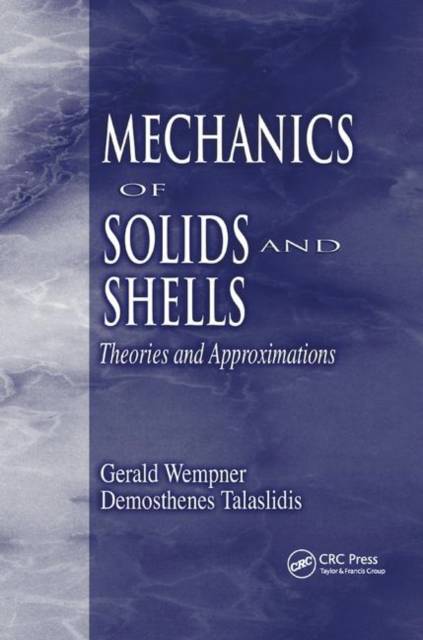
- Retrait gratuit dans votre magasin Club
- 7.000.000 titres dans notre catalogue
- Payer en toute sécurité
- Toujours un magasin près de chez vous
- Retrait gratuit dans votre magasin Club
- 7.000.0000 titres dans notre catalogue
- Payer en toute sécurité
- Toujours un magasin près de chez vous
129,95 €
+ 259 points
Format
Description
Emphasizing the assumptions and approximations that lead to the mathematical formulations, Mechanics of Solids and Shells offers a practical, unified presentation of the foundations of the mechanics of solids, the behavior of deformable bodies and thin shells, and the properties of finite elements. It presents the fundamental kinematics, dynamics, energetics, and behavior of materials that build a foundation for discussions on elasticity. A chapter on energy principles forms the basis for the approximations and theories related to shells, and the final chapter introduces the finite element as an approximation device and builds a bridge between the continuum and the discrete assembly.
Spécifications
Parties prenantes
- Auteur(s) :
- Editeur:
Contenu
- Nombre de pages :
- 552
- Langue:
- Anglais
- Collection :
Caractéristiques
- EAN:
- 9780367395698
- Date de parution :
- 11-09-19
- Format:
- Livre broché
- Format numérique:
- Trade paperback (VS)
- Dimensions :
- 155 mm x 231 mm
- Poids :
- 771 g

Les avis
Nous publions uniquement les avis qui respectent les conditions requises. Consultez nos conditions pour les avis.






